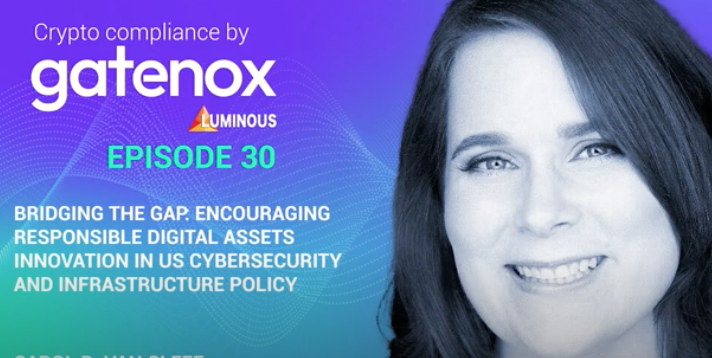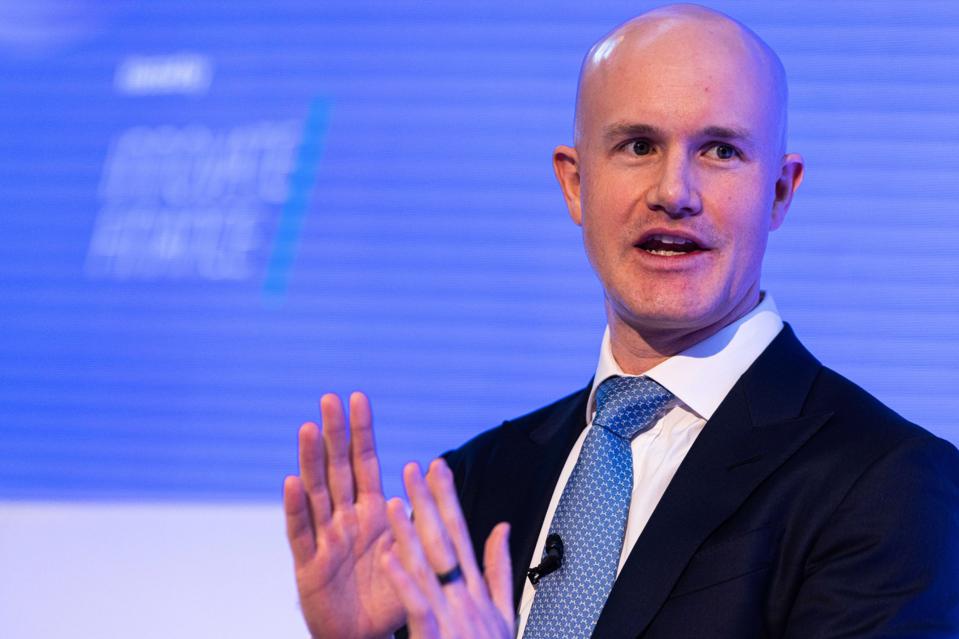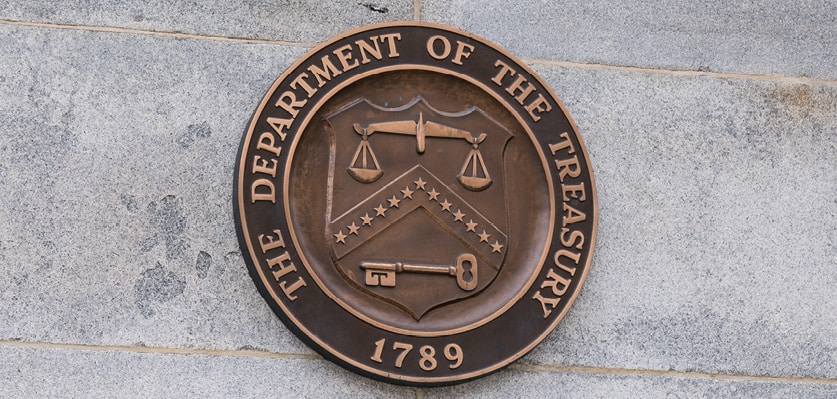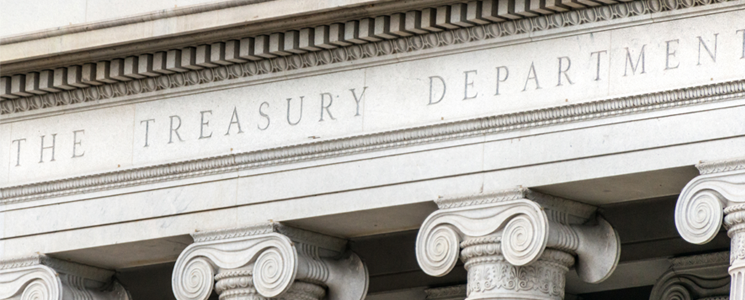
Podcast: Carol Van Cleef with Carole House: Encouraging Responsible Digital Assets Innovation in US CyberSecurity and Infrastructure Policy. (June 2024)

Coinbase Ups The Ante In Its Campaign
Against The SEC To Save Crypto In The U.S.
Carol Van Cleef, Washington DC lawyer and CEO of Luminous Group, said in an interview that “Any company suing the SEC faces an uphill battle…even if they win, any outcome on the merits – actual rules – could be years away. The crypto community is seemingly encouraged that Coinbase has gone on the offensive against the much demonized SEC for what the crypto community perceives as years of regulation by enforcement. However, Coinbase is not directly going on the offensive to attack the issue that most likely will underlie future litigation against it if or when its discussions with the SEC reach that point.”
Read Full Article (May 2023)
Sometimes people file lawsuits not because they think they will win, but because they know the lawsuit is the only way to ignite the kind of conversation that will effect meaningful change.
In recent days Coinbase took two important steps to accelerate the conversation on how crypto assets in the U.S. will be regulated. First it responded – and made public its response – to a “Wells Notice” served by the SEC on the company in late March. Then, it took the bold step of suing the SEC, albeit on a “narrow” administrative matter in a U.S. federal court, to underscore the issues it asserts are adversely impacting U.S. residents and their access to and use of crypto.
While acknowledging that the Wells Notice “is not a formal charge or lawsuit,” the Company said “it can lead to one” and outlined several areas of SEC focus including operating an unregistered exchange, clearing agency and broker as well as its wallet offering and staking activities. On each point, its publicly available response made convincing arguments against the SEC’s positions.
The question is what is the long game here – minimize corporate disruption from potentially crippling enforcement actions, delay any type of enforcement action for as long as possible, force a quick turnaround on the agency’s apparent positions contrary to the interest of the Company’s customers, or provide a catalyst for accelerated Congressional action. While SEC Chair Gary Gensler may be long gone by the time any of these issues wind their way through the agency or the courts, in the short term, substantial corporate resources are being deployed in what increasingly looks like war. Or, at the very least a massive offensive to encourage broad scale discussions on the issues, including the formation of the Crypto 435 (whose first opponent may be Elizabeth Warren’s Anti-Crypto Army.). .
As Coinbase is trying to enlist the crypto community through its grassroots efforts to get involved in advocacy, it is also adding some heavy artillery to its front line to carry on the legal offensive. It has hired an ex-Trump Cabinet member and two former federal enforcers. Coinbase’s outside legal team now includes former U.S. Labor Secretary Eugene Scalia, who is a Gibson Dunn partner, and two former enforcement directors—Steven Peikin (SEC) and James McDonald (Commodity Futures Trading Commission), both of whom now are Sullivan & Cromwell partners and who with colleague Kathleen McArthur, filed the Wells response on behalf of Coinbase. Each of the three charges clients more than $2,100 per hour, based on filings the firm made as part of its representation of FTX in the collapsed crypto exchange’s bankruptcy. Jay Clayton, the former SEC chair, is also of counsel at Sullivan & Cromwell, one of Wall Street’s priciest and best-known law firms..
The lawsuit filed by Scalia and his team at Gibson Dunn in the Third Circuit asks the court to compel the SEC to respond to a rule-making petition Coinbase filed last year to address a number of issues raised by the Company. Coinbase makes clear that it “is not asking the Court to instruct the agency how to respond. We are simply requesting that the Court order the SEC to respond at all, which they are legally obligated to.” Coinbase argues that the SEC is violating the Administrative Procedure Act by failing to respond within a reasonable time.
Carol Van Cleef, Washington DC lawyer and CEO of Luminous Group, said in an interview that “Any company suing the SEC faces an uphill battle…even if they win, any outcome on the merits – actual rules – could be years away. The crypto community is seemingly encouraged that Coinbase has gone on the offensive against the much demonized SEC for what the crypto community perceives as years of regulation by enforcement. However, Coinbase is not directly going on the offensive to attack the issue that most likely will underlie future litigation against it if or when its discussions with the SEC reach that point.”
Forbes Daily: Our best stories, exclusive reporting and Forbes perspectives on the day’s top news, plus the inside scoop on the world’s most important entrepreneurs.Sign Up
You may opt out any time. By signing up for this newsletter, you agree to the Terms and Conditions and Privacy Policy
In the meantime, shareholders of Coinbase may question the utility of the lawsuit and whether it is more of a distraction for the coming battle whose lines appear to be drawn in the Wells Notice. Should Coinbase be using funds for this purpose? There is precedent for shareholders suing Coinbase. In 2021, a derivative suit was filed in Delaware over executive mismanagement against CEO Brian Armstrong, CFO Alesia Haas, and Chief Account Officer Jennifer Jones. Additionally, directors Fred Ehrsam, Marc Andreesen, Kathryn Haun, Gokul Rajaram, and Fred Wilson were listed as defendants. The lawsuit sought to have the executives pay damages to Coinbase itself. Various other lawsuits have been filed against Coinbase regarding its IPO, including one in New Jersey and one in the Northern District of California.
What is clear from all of this is that the battles to gain greater real or perceived regulatory clarity will continue to use resources on both sides.
Podcast: How are stablecoins different to CBDCs in terms of risk? (April 2023)
Pawel Kuskowski talks to Carol Van Cleef about stablecoins and how they could present systemic risk, the key differences between USDT and USDC and how stablecoins are backed. They also discuss the regulatory considerations when USDT hit the 50 billion mark and why USDT acquired mass adoption. Pawel also discussed the concerns regarding CBDCs which Carol rebuts are already present in fiat currency.
Podcast: What are the global regulations around VASPs? (April 2023)
Gatenox CEO, Pawel Kuskowski invited Director and Head of Public Affairs, Policy, Regulatory Affairs of Xapo Bank, Joey Garcia to discuss the global regulations around VASPs. Joey is one of the pioneers for the regulation of the virtual currency and distributed ledger technology space and chairs a specialised industry technical working group seeking to provide a working solution for the industry for the recently published FATF recommendations in respect of the Travel Rule, and provides different regulatory authorities guidance and training in respect of the other FATF recommendations. Joey shares how regulatory interpretations can differ in the DeFi space, and how VASPs regulations differ globally. He also shares his viewpoint on why access points into crypto should be regulated and the types of market abuse which can happen in crypto exchanges.
Podcast: The State of AML and CFT in Crypto (April 2023)
Pawel Kuskowski talks to Amanda Wick, founder and CEO of The Association of Women in Crypto, former Chief of Legal Affairs at Chainalysis and Senior Policy Advisor at the Financial Crimes Enforcement Network (FinCEN) who has been in crypto since 2013. They discuss the size of money laundering in crypto and how there are caveats to the estimate of this figure but think that it is realistically similar to the amount of money laundering happening in traditional finance. However, the more important question to ask is “How do you detect money laundering?” which with the tools available in blockchain analytics are so much better in crypto than in traditional finance. They also discuss how to track exchanges notorious for money laundering via external tracking tools providing honest vetted data but that there could be a structural problem in the incentive structure. There is also a problem if regulatory bodies do not have a designated authority to deal with enforcement in certain jurisdictions. The nature of the US government being reactive to the changes in regulation is causing the US to lose the innovation war in digital assets as crypto exchanges leave the jurisdiction. They also discuss the risk of DeFi being built without building in any AML and CFT measures due to negligence. Digital identity and zero knowledge proofs are pieces that can be part of the future of digital assets because we are now at the point where it is too expensive for DeFi services to move fast and break things without paying attention to any regulatory considerations as a money transmitter.

Never Underestimate the Power of
Good Sanctions Compliance
U.S. crypto exchange, Kraken, is suspected of violating sanctions. According to the NY Times, the U.S. Treasury Department’s Office of Foreign Assets Control has been investigating Kraken since 2019 and is expected to impose a fine. Kraken would be the largest U.S. crypto firm to face an enforcement action from OFAC Sanctions against Iran, which the U.S. imposed in 1979, prohibiting the export of goods or services to people or entities in the country.
Read Full Article (July 2022)
A good sanctions compliance program can significantly mitigate fines if it’s adequately implemented and effective. Luminous Group can help you review your current sanctions compliance efforts, devise a strategy for enhancing your efforts and resolve any shortcomings, and implement your strategy. Contact us today for more information and to learn about our upcoming virtual sanctions compliance training.

Time to File Your 2022 Annual Report of
Blocked Property
Holders of blocked property must file an Annual Report of Blocked Property (ARBP) with the Office of Foreign Assets Control (OFAC) that includes a comprehensive list of all blocked property held as of June 30, 2022, by September 30, 2022. The term blocked property only applies to property that is blocked pursuant to OFAC regulations. Persons that do not hold blocked property as of June 30 do not need to file in 2022.
Read Full Article (July 2022)
This requirement applies to all U.S. persons (or persons subject to U.S. jurisdiction) who have or have had in their possession or control any property blocked pursuant 31 C.F.R. § 501.603 of the Reporting, Procedures and Penalties Regulations (RPPR), including financial institutions that receive and block payments or transfers.
US Treasury Bulletin: https://content.govdelivery.com/accounts/USTREAS/bulletins/31ea8ce
ARBP Filing Guidance: https://home.treasury.gov/system/files/126/ofac_blocked_property_guidance.pdf
Regulation: https://www.ecfr.gov/current/title-31/subtitle-B/chapter-V/part-501/subpart-C/section-501.603

Mixing Things Up
As a result of the U.S. Treasury Department’s action, all U.S. properties and interests belonging to Blender.io must be blocked and reported to the Office of Foreign Asset Control (OFAC). The Treasury determined that the Blender.io mixer was used to obfuscate and launder more than $20.5 million from a recent hack. OFAC also identified Blender.io’s role in the facilitation of money laundering for Russian-aligned ransomware groups including Trickbot, Conti, Ryuk, Sodinokibi, and Gandcrab.
Read Full Article (June 2022)
The ongoing shenanigans of North Korean Lazarus Group has led to imposition of the first ever U.S. sanctions on a cryptocurrency mixer, Blender.io. The Lazarus Group, which has now been linked to the recent theft of $620 million in value from a video game, Axie Infinity, has had numerous other cyberattacks attributed to it over the last 12 years. This latest action is the latest in the Treasury Department’s efforts over the years to add malicious actors and crypto wallet addresses associated with the Lazarus Group, to the Specially Designated Nationals (SDN) List maintained by OFAC.
Axie Infinity is a blockchain-based game that rewards users that collect, breed, raise, battle, and trade Axies, creatures such as beast, plant, bug, and bird, and are made up of more than 500 body part elements. The Axie Infinity Shards (AXS) token is used to participate in the game and serves as its governance token. Players can earn the Smooth Lover Potion (SLP) tokens by completing quests or beating an opponent. SLP can then be traded for fiat or other cryptocurrency at a crypto exchange.
The Federal Bureau of Investigation (FBI) was “able to confirm Lazarus Group and APT38, cyber actors associated with the DPRK, are responsible for the theft of $620 million in Ethereum reported on March 29th.” The hackers infiltrated the game’s underlying blockchain, bridging it to the main Ethereum network and allowing players to transfer funds in and out of it and use “hacked private keys” to make fraudulent transactions. The FBI vowed, in coordination with Treasury and other U.S. Government partners, to“ continue to expose and combat the DPRK’s use of illicit activities — including cybercrime and cryptocurrency theft — to generate revenue for the regime.”
The U.S. Treasury Department reiterated in connection with its actions against Blender.io, “the virtual currency mixers that assist criminals are a threat to U.S. national security interests. Treasury will continue to investigate the use of mixers for illicit purposes and consider the range of authorities Treasury has to respond to illicit financing risks in the virtual currency ecosystem.” As an example of such powers, it pointed to $60 million civil money penalty assessed by the Treasury Department’s Financial Crimes Enforcement Network in 2020 against the owner and operator of a virtual currency mixer.
This Treasury Department proclamation underscores the need to review existing sanctions compliance for screening and monitoring customer activities to ensure that reasonable efforts are being made to prevent funds being sent to or received from third party wallets that involve either sanctioned wallet addresses or sanctioned persons. (OFAC has made clear a Sanctions Compliance Program, that includes a robust assessment of sanctions risks, is an important mitigating factor considered by OFAC in reviewing sanctions violations.)
Likewise, in light of these renewed efforts of U.S. regulators with respect to mixers, revisiting AML policies and procedures should be a priority to ensure appropriate efforts are being made to identify transactions to, from or through mixers. An important element of a robust AML program are procedures for addressing customers involved in such transactions as they may require designation as higher risk customers, subject to greater initial and potentially on-going customer due diligence and monitoring.
June 2022

Who put “Stable” in the word Stablecoins?
Coincidence? On the same day the Federal Reserve Board issued its Financial Stability Report addressing, among other things, stablecoins, all hell broke loose in the cryptocurrency markets due to a stablecoins instability. The Financial Stability Report, according to Fed Governor Lael Brainard, ‘underscores the importance of our ongoing work to identify and closely monitor risks to the financial system and to ensure the financial system remains resilient. In particular, the report assesses how key financial system vulnerabilities and strengths have evolved over the last six months.” The Financial Stability Report, according to Fed Governor Lael Brainard, ‘underscores the importance of our ongoing work to identify and closely monitor risks to the financial system and to ensure the financial system remains resilient. In particular, the report assesses how key financial system vulnerabilities and strengths have evolved over the last six months.”
Read Full Article (June 2022)
The Report identified Stablecoins as vulnerable to runs, and noted the sector continues to grow rapidly. Although many stablecoins are convertible, at par, to dollars, they may be backed by other assets that lose value or become illiquid during stress, presenting potential redemption risks similar to those of money market funds (“MMFs”). These vulnerabilities may be exacerbated by a lack of transparency regarding the riskiness and liquidity of the assets backing stablecoins. Additionally, the increasing use of stablecoins to meet margin requirements for levered trading in other cryptocurrencies may amplify volatility in stablecoin demand and heighten redemption risks.
The report was issued against the backdrop of drama surrounding TerraUSD (“UST”), then the third most widely circulated stablecoin. Terra was not like the stablecoins focused on in the report. Instead, it was an “algorithmic stablecoin” that was intended to maintain a 1-1 peg with the U.S dollar in accordance with a prescribed mathematical formula and without reliance on underlying reserves like USD to maintain value. The circumstances surrounding UST was complicated by the existence of a sister token LUNA, that was used a mechanism to adjust the supply of UST and stabilize prices. In addition, a defi lending protocol called Anchor offered high yields on UST deposits generating significant demand for and use of UST by hungry investors. Use of UST on the Anchor protocol accounted for approximately 75% of all UST in circulation in smart contracts on Anchor protocol. As selling pressure mounted, the prices of LUNA and UST began falling and efforts to prop them up with $1.5 billion of bitcoin failed to halt the sell off and collapse in the markets for both coins.
Again coincidence? The next day the Secretary of the U.S. Treasury Department testified before the Senate Banking Committee, one of the committees that will play a key role in any Congressional consideration of cryptocurrency legislation this year and in the future. Relying on information from the Wall Street Journal, Secretary Yellen noted the turmoil in the crypto markets due to UST and indicated her support for stablecoin legislation as early as this year. This is consistent with the Executive Order (EO) 14067 issued by President Biden in March 2022, The EO “Ensuring Responsible Development of Digital Assets,” which outlined an integrated government approach for the responsible development of digital assets, called for among other things, steps to mitigate the risks discussed in the FRB’s Financial Stability Report.
The current prospects for cryptocurrency legislation in the U.S. is heightened by the mid-May stablecoin instability. This legislation, if passed this year, more likely than not will be limited to stablecoins. Ironically, all discussion about stablecoins to date in the Biden administration and in Congress has been primarily focused on asset backed stablecoins and not algorithmic stablecoins. In the end, if such legislation passes, the cryptocurrency markets are likely to see more regulation around this kind of crypto asset, including more stringent customer identification, verification, and monitoring requirements.
June 2022

Peirce’s Safe Harbor is Worth a Look, But It May Not Be Worth the Effort
We confess that, on first read of SEC Commissioner Hester Peirce’s safe harbor (SH) proposal, we were skeptics. It is very limited in scope, is only a rough draft and appears to have little to no chance of becoming law as Peirce’s term as commissioner is scheduled to expire in June and no other commissioner has yet expressed support for the proposal.
Read Full Article (February 2020)
Despite our skepticism, the proposal has attracted much attention and significant praise from the crypto community. Why? First, the community is starved for any constructive, supportive and engaged attention from policymakers in D.C. in addressing regulatory barriers to innovation.
Second, the proposal offers a potential solution to an important Catch-22 encountered by token-based networks before they are fully functional or decentralized. It would provide relief from federal securities law requirements often viewed as handicapping projects needing to get tokens into the hands of potential users to achieve full functionality or decentralization.
The important question is whether the crypto community should invest its time and resources in support of the Peirce proposal, given the odds against it. To answer this question, one must first ask (a) whether there are other ways to solve the problem more expeditiously and, more importantly, (b) if this particular proposal provides the most desired solution.
Alternative pathways. Although a fledgling group in Congress understands the technology and its potential, obtaining a legislative consensus on any one proposal is complicated under the best of circumstances.
Getting a bill to the President’s desk is rare. Based on data over almost 20 years, on average only 2 to 3 percent of all legislation introduced in Congress becomes law. Moreover, election-year calendars usually have fewer legislative days and this year has even fewer due to the recently concluded impeachment process. Realistically, passage of a bill usually requires either (a) a crisis or (b) years of work, lots of money and the buy-in of multiple constituents, including not only other members of Congress, but also the administration and independent regulatory agencies, as well as those outside of government, such as consumer advocacy groups. The process is much like driving over a very rough road with lots of rocks and potholes, any one of which could blow a tire, break the suspension or wreck the car.
Regulatory action involves far fewer people and potential pitfalls but it is not necessarily quicker or more certain. In the case of the SEC, the five commissioners are the decision-makers, supported by competent and respected professional staff. Its actions are governed by the Administrative Procedure Act, which prescribes specific steps the SEC and other agencies must follow if they want to establish new rules. These steps include a formal proposal and comment process that could take months if not years.
Limits on a commissioner’s power. Commissioner Pierce has offered a welcome oasis for the crypto community in a federal bureaucracy that tends to be more reactive than proactive. She earned her the nickname “Crypto Mom” because she is willing to listen and offer solutions, not excuses to difficult issues the industry faces with her agency. But her enthusiasm may not be enough to move the proposal through the SEC.
Without a doubt, as only one of five on the commission, which historically has been dominated by the chairman, Peirce’s ability to influence consideration of the proposal is limited. Without the support of one or more other commissioner and some senior staff, borrowing a football analogy, she is trying to pass from her own end zone with little or no pass protection.
Of course, she realizes there are skeptics: “I suspect some of you are asking, ‘Who cares?’ I get the point. I am one of five commissioners. I cannot write rules unilaterally,” she has said.
Borrowing another football analogy, she seems to be making a Hail Mary pass, throwing it long and deep, hoping someone will catch and run with it. Quoting from Bruce Springsteen, she says, “You can’t start a fire without a spark,” and asserts optimistically that “[i]t does not hurt to get the ball rolling. People change their minds.”
The monkey’s paw. A decision to support the SH should be based on a good understanding of the proposal itself, how it accomplishes its objective and the potential consequences, both intended and unintended. In this context, we should remind ourselves to be careful of what we wish for.
The proposed SH is narrow in scope: simplify the process of raising capital in certain types of token projects involving the development of a functional or decentralized network, thereby encouraging developers to continue innovating in the United States.
The SH would offer projects a three-year grace period to raise critical funding through token sales without registering the token as a security, provided certain conditions are met. During this period, the team would be required to make a good faith effort to create “liquidity for users.” Secondary market trading of tokens would be allowed, even encouraged (again, provided certain conditions are satisfied) on trading platforms that are similarly subject to the SH if they facilitate trading of these tokens.
The proposal also contains several provisions the consequences of which should be considered in evaluating the proposal as a whole:
Shifting responsibilities and costs? First, the proposal shifts to the private sector much of the SEC’s oversight responsibilities and eliminates the delays attributable to SEC review that often accompany public offerings. However, it is not a panacea – there will be costs associated with compliance, the burdens of disclosure have not been eliminated and the SEC will still have jurisdiction under the anti-fraud provisions of securities laws.
More transparency? Additionally, a detailed list of information about each project must be made available initially on a freely accessible public website and updated upon change. Undoubtedly, private services will seize upon the opportunity to use access to this information to develop new products and services that will facilitate analysis of the projects, potentially providing greater scrutiny of fundamentals and better oversight of the projects on an ongoing basis. Presumably, all investors in the project would have access to levels of information usually reserved for larger investors.
New de facto regulator? Furthermore, projects would become de facto regulators of trading platforms. If a project team decides to facilitate secondary trading on a “trading platform,” the team is required to seek one that can “demonstrate compliance with all applicable federal and state law and regulations relating to money transmission, anti-money laundering, and consumer protection.” By requiring them to ascertain the regulatory status of the trading platforms, the proposal effectively requires projects to police the compliance efforts of the platforms.
WHETHER THE COMMISSIONER IS PROPOSING A SANDBOX OR A BEACH, NEITHER WILL BE CREATED IN A VACUUM.
To what extent will projects be required to continuously validate platforms’ claims of compliance? Would they be allowed to rely on third-party validations? The only certainty is that lawyers for both projects and platforms will be busy writing opinions to satisfy this requirement.
Out of the frying pan, into the frying pan. Importantly, this requirement also subtly changes the focus on how trading platforms are regulated. Since the proposal exempts them from regulation as exchanges under the securities law, trading platforms for covered tokens are assumed by the proposal almost backhandedly to be regulated under money transmitter licensing laws. In other words, projects are not asked to certify that platforms are compliant with securities laws, but rather to verify the platforms’ compliance with state money transmitter licensing laws, further helping to cement project tokens’ non-security status.
Sandbox vs. beach? Some view this proposal as a sandbox. One publication referred to it as Peirce’s “beach,” borrowing upon a 2018 speech where she favored a beach rather than a sandbox, where “[t]he regulator monitors the landscape [like a lifeguard], steps in to stop violations when they occur, and stands ready to answer interpretive questions as people seek to understand how the rules apply to their situation… but the regulator leaves ample room for innovators to develop their ideas without the regulators sitting at their shoulder taking part in each creative decision.” Whether the Commissioner is proposing a sandbox or a beach, neither will be created in a vacuum.
Can crypto support change the odds? With the support of the crypto community, can the odds of the SH becoming law or regulation change? Should it allow itself to be distracted from other pressing priorities, given the seeming odds against adoption?
Commissioner Peirce is encouraging discussion and feedback on the proposal. That process will not necessarily improve the chances that it will eventually be considered by the SEC, but may help identify and refine what may be feasible in the future. If the community decides this proposal – or another – has value and ultimately should become law, it needs to engage both individually and collectively through industry groups and coalitions. Allies outside the crypto community are also critical, in both the private and public sectors. The consumer lobbies cannot be ignored. And above all, a commitment of time and money will be necessary.
February 2020
Executives from Celsius Network, TD Ameritrade, Asensys, Amberdata, O(1) Labs, RADAR, Luminous Group, and HerCode comprise initial guest line-up for Season 3 of Crypto Token Talk Podcast
Crypto Token Talk Podcast Kicks Off Season 3 with Distinguished Thought Leaders in the Crypto Community
LOS ANGELES, Feb. 28, 2020 /PRNewswire-PRWeb/ — Crypto Token Talk, the 101 podcast featuring thought leaders in crypto and blockchain produced by premiere blockchain-focused communications firm, Melrose PR, kicks off Season 3 with acclaimed thought leaders and executives in the crypto sphere. The initial line-up features:
- Sunayna Tuteja, Head of Digital Assets & DLT at TD Ameritrade
- Michelle Chuang, COO of Asensys
- Tongtong Gong, Co-Founder and COO at Amberdata
- Emre Tekisalp, Head of Business Development at O(1) Labs, the team behind the Coda Protocol
- Shala Burroughs, VP Strategy at RADAR
- Carol R. Van Cleef, CEO Luminous Group
- Alex Mashinsky, CEO of Celsius Network
- Nicole Campa and Avalon Barrie, Co-Founders of HerCode
- Heidi Pease, Founder of LA Blockchain Lab
Crypto Token Talk host and CEO of Melrose PR, Kelley Weaver, looks forward to discussing transformational projects as well as the topics that don’t receive the coverage in the media that they deserve.
Crypto Token Talk Host Kelley Weaver said, “There are so many blockchain projects running successful testnets, growing their communities, and launching fully-functional dapps right now in 2020, and yet there are far fewer stories reaching the mainstream than in the height of the ICO fervor in 2017. One of the goals of this podcast is to shed light on the un-song tales in blockchain and introduce these world-changing projects to our audience of die-hard blockchain enthusiasts, the crypto-curious, and newbies.”
Sunayna Tuteja, Head of Digital Assets & DLT at TD Ameritrade, expressed, “It’s inspiring to witness how different folks are contributing to the forward momentum of this ecosystem. At TD Ameritrade, we are obsessed with bringing the power of this new tech and asset class to retail investors and the RIA community. Guided by the voice of the client, we are focused on enabling on-ramps that are user-friendly, compliant and complemented by a rich repository of education and best in class service. We’ve always been driven by the ethos of bringing Wall Street to Main Street and crypto offers yet another way to bring customer-focused innovation to life.”
Michelle Chuang, COO of Asensys, has over 20 years of experience in marketing and customer engagement and has led key initiatives for companies such as Starbucks, Chevron, and Staples Inc. She conveyed, “The media and the general public has gotten impatient with blockchain technology’s development. The most commonly-asked question remains, when are we going to reach mainstream adoption? But more so than ‘when?’ we should be looking at which projects have the technology, talent, and backing to successfully power the decentralized web, regardless of timeline.”
Tongtong Gong, Co-Founder and COO at Amberdata, a Blockchain and Digital Asset Data company, said, “When people hear the word ‘Crypto,’ there is still the general sense of enigma and question. However the undeniable fact is that Bitcoin as a digital commodity has already changed the world of finance. We are witnessing a once in a lifetime paradigm shift that originated from this very community of innovators and ‘rebels.’ Like Steve Jobs said, ‘It’s the people who are crazy enough to think that they can change the world, are the ones who do.’ “
Emre Tekisalp, Head of Business Development at O(1) Labs, the team behind the Coda Protocol, said, “Conversation around new blockchains have revolved primarily around throughput. Only examining a project’s potential by transactions per second without accounting for decentralization does a disservice to the crypto community that believes strongly in the values of permissionless access, inclusive consensus, and self-governance. We need to edit the way we are thinking about scalability if we want to design blockchain systems that meet the needs of their users.”
Shala Burroughs, VP Strategy at RADAR, articulated, “In the crypto world no one talks about how big companies and enterprises are engaging until it hits the press. Often that press doesn’t offer visibility into the progress that has been made behind the scenes. The big secret is that these companies are hiring teams, engaging start ups for consulting, creating partnerships, and building technology. They are not going to sit by and be disrupted – they are ready to go deep.”
Carol R. Van Cleef, CEO Luminous Group, looks forward to discussing the stablecoin landscape on the podcast. She shared, “Stablecoins are one of the most talked about subjects in crypto today, but they are also possibly one of the least understood facets of the industry. This is due, in part, to the fact that the term ‘stablecoin’ encompasses many different flavors of stablecoins, many of which share little in common with others. When it comes down to it, you cannot look at all of them in the same way.”
Alex Mashinsky, CEO of Celsius Network, stated, “The crypto sector needs to start talking about how we’re going to actually spur mainstream adoption. Our view at Celsius Network is that interest income will bring the next 100 million people from all over the world into crypto. Once a critical mass of people realizes they can earn far better yield on their stable coins (Crypto dollars) than on their digital Bank dollars, the shift from fiat to digital currencies will rapidly accelerate.”
Nicole Campa, Co-Founder of HerCode, said “It’s exciting to see the blockchain education space really start to come to life alongside the blockchain industry as a whole. Some top universities are implementing blockchain courses into their curriculum now instead of just having a foundational course and nothing more. Since LinkedIn called blockchain the #1 hard skill of 2020, we believe the education space will have to follow in shaping how they set students up for success for blockchain related jobs in various career paths, not just those that focus solely on STEM. We’re excited to be part of blockchain education initiatives that focus on diversity and look forward to seeing this part of the industry grow.”
For cryptocurrencies and blockchain technology to achieve mass adoption, continued conversation and collaboration is key. Crypto Token Talk aims to do its part to shed light on the projects and ideas paving the way to a future powered by blockchain systems.
https://finance.yahoo.com/news/crypto-token-talk-podcast-kicks-140000446.html
